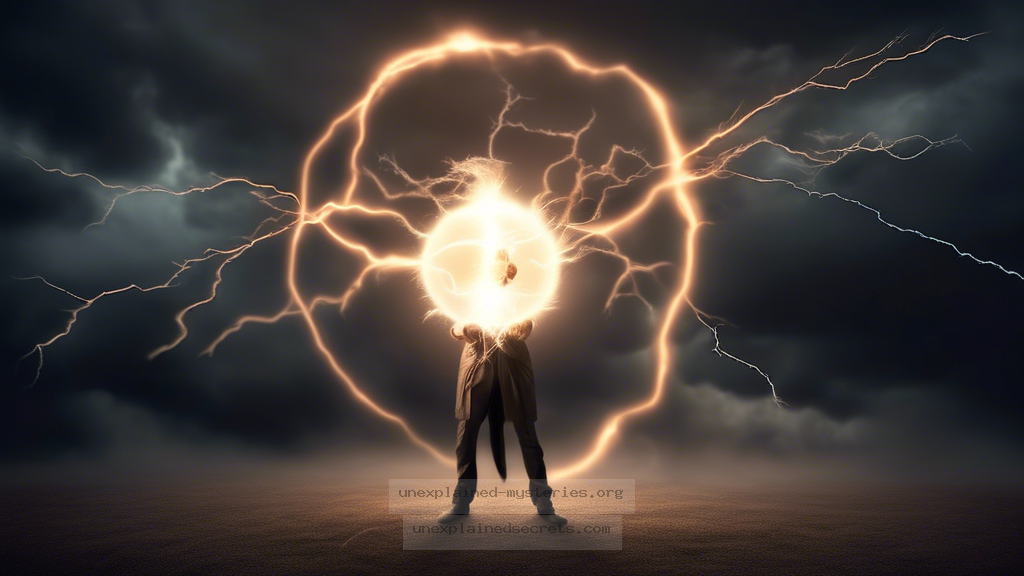What Causes the Mysterious Phenomenon of Ball Lightning?
What Causes the Mysterious Phenomenon of Ball Lightning?
Ball lightning is one of the most perplexing and captivating phenomena in the realm of atmospheric science. Despite being reported for centuries, its exact nature remains shrouded in mystery. Witnesses describe it as glowing, spherical objects that can float, dart, and even explode with a loud bang, often appearing during thunderstorms. Given its elusive nature, the question of what causes ball lightning not only intrigues scientists but also raises significant implications for our understanding of physics and atmospheric phenomena. Let’s delve into this scientific enigma and explore its many facets.
Historical Context of Ball Lightning
The phenomenon of ball lightning has been documented throughout history, with references dating back to ancient times. Reports from various cultures describe similar glowing orbs. In the 19th century, the phenomenon was increasingly scrutinized by scientists. Notably, in 1838, the astronomer William Herschel recorded an observation of ball lightning during a thunderstorm. Over the years, numerous accounts have emerged, with some even claiming that ball lightning can penetrate buildings and harm individuals.
Despite these historical accounts, scientific interest in ball lightning surged in the late 20th century. Researchers began to treat it as a legitimate scientific inquiry, prompting various theories to explain its origins. Yet, the lack of reproducible experiments and reliable data kept the phenomenon firmly in the realm of mystery. Even today, the scientific community has not fully reached a consensus on its cause or nature.
Core Concepts and Theories of Ball Lightning
Numerous theories have been proposed to explain the phenomenon of ball lightning, each with its own set of implications. Here are some of the most notable theories:
- Plasma Theory: One of the widely accepted explanations is that ball lightning may be a form of plasma, a state of matter where gas is energized to the point that some electrons are freed from their nuclei. This could account for the glowing appearance and erratic movement of the spheres.
- Vaporized Silicon Hypothesis: Proposed by researchers in the 20th century, this theory suggests that ball lightning could be composed of vaporized silicon from soil or sand, reacting with the atmosphere during a lightning strike.
- Electrical Discharge Theory: Some scientists speculate that ball lightning results from a specific type of electrical discharge which creates a stable, glowing ball of energy that can float and move independently.
- Chemical Reaction Theory: This hypothesis suggests that the orbs could be the result of chemical reactions between gases in the atmosphere, possibly involving methane or other flammable gases.
While these theories offer intriguing possibilities, none of them have been definitively proven, and the exact mechanisms behind ball lightning remain elusive.
Practical Implications and Evidence
The implications of understanding ball lightning are far-reaching. If scientists can ascertain its nature, it could lead to advancements in energy storage, lightning protection, and atmospheric science. For instance, if ball lightning is indeed related to plasma, harnessing plasma technology could revolutionize energy production and storage. Moreover, understanding this phenomenon could improve safety measures during thunderstorms, potentially preventing injuries and fatalities caused by lightning strikes.
Research into ball lightning has also been fueled by documented eyewitness accounts. One notable case occurred in 1984 when a group of researchers on a mountain in China observed a glowing sphere that floated and eventually exploded. This documented evidence, while anecdotal, contributes to the ongoing investigation into the phenomenon.
Alternative Perspectives on Ball Lightning
While mainstream science tends to favor the aforementioned theories, alternative perspectives exist that challenge conventional explanations. Some researchers propose that ball lightning might be a manifestation of a quantum phenomenon or even a form of extraterrestrial technology. Although these ideas may seem far-fetched, they highlight the complexity of the phenomenon and the need for open-mindedness in scientific inquiry.
Additionally, cultural interpretations of ball lightning can provide insights into how societies understand and interact with unexplained phenomena. Folklore and anecdotal accounts often reflect local beliefs and fears, shaping how people perceive and respond to ball lightning.
Common Misconceptions About Ball Lightning
There are several misconceptions surrounding ball lightning that can obscure our understanding of the phenomenon. Here are a few clarifications:
- Myth: Ball lightning is always dangerous. While some accounts describe violent explosions, many witnesses report harmless, glowing spheres that float without causing harm.
- Myth: Ball lightning only occurs during thunderstorms. Although most sightings are linked to storms, there have been reports of ball lightning occurring in other contexts, suggesting it may not be exclusively storm-related.
- Myth: All glowing orbs are ball lightning. Many phenomena, such as will-o’-the-wisps or swamp gas, can be mistaken for ball lightning, leading to confusion.
Key Point: Ball lightning is an unexplained phenomenon that continues to perplex scientists, with many theories but no consensus on its origin.
Best Practices for Investigating Ball Lightning
For researchers and enthusiasts interested in studying ball lightning, several best practices can enhance the investigation process:
- Documenting Sightings: Encourage eyewitnesses to provide detailed accounts, including environmental conditions, time, and behavior of the phenomenon.
- Collaboration with Meteorologists: Work with meteorological experts to correlate ball lightning sightings with atmospheric data, potentially uncovering patterns.
- Utilizing Technology: Employ high-speed cameras and sensors during thunderstorms to capture evidence of ball lightning in real-time.
By adopting a multidisciplinary approach, researchers can uncover new insights into ball lightning and its underlying principles.
Future Developments and Ongoing Research
The study of ball lightning is not stagnant; ongoing research continues to explore its complexities. Innovative methods, such as simulations and laboratory experiments, are being employed to replicate the conditions under which ball lightning may form. These efforts aim to elucidate the fundamental properties of the phenomenon and its potential applications.
Furthermore, advancements in technology, such as improved imaging techniques and atmospheric sensors, may allow scientists to capture and analyze ball lightning in unprecedented detail. This could lead to breakthroughs that not only clarify the mystery of ball lightning but also enhance our understanding of electrical phenomena in general.
Future Insight: Ongoing advancements in technology and interdisciplinary research hold promise for unveiling the secrets of ball lightning, potentially transforming our understanding of atmospheric science.
Conclusion
Ball lightning remains one of the most intriguing scientific mysteries of our time. Despite numerous theories and historical accounts, its exact nature continues to elude definitive explanation. From the potential implications of plasma technology to alternative perspectives and cultural interpretations, the study of ball lightning offers a rich tapestry of inquiry. As researchers employ innovative techniques and collaborate across disciplines, we may finally uncover the secrets behind this captivating phenomenon. Ultimately, the quest to understand ball lightning not only enriches our knowledge of atmospheric phenomena but also challenges the boundaries of scientific inquiry, reminding us that the universe is full of mysteries waiting to be explored. 💡
Other Articles
Recent Posts
- What Happened to Flight MH370? The Conspiracy Theories That Still Haunt Us
- What Secrets Lurk Within the Walls of the Infamous Trans-Allegheny Lunatic Asylum?
- What Evidence Supports the Existence of Bigfoot in the Pacific Northwest?
- What Happened to the Indus Valley Civilization? Unraveling the Mysteries of Ancient Urban Life
- Can Telepathy Be Scientifically Proven Through Laboratory Evidence?







